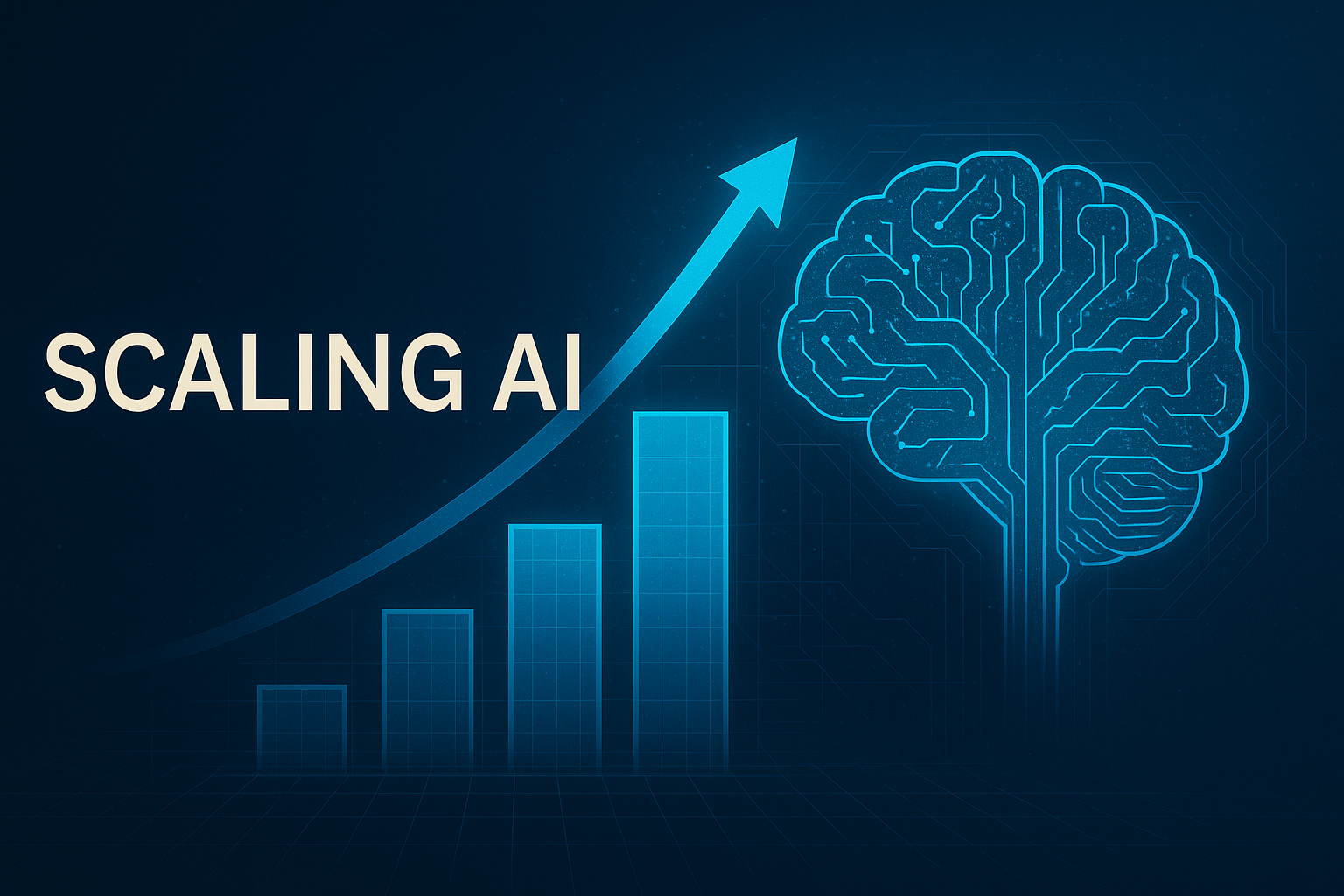In the world of artificial intelligence (AI), it turns out that size matters. But a landmark discovery has shown that how you grow is just as important as how big you get.
For years, AI development has been guided by a set of “scaling laws.” These are not strict laws of nature, but powerful empirical observations. Groundbreaking 2020 research from OpenAI, detailed in the paper “Scaling Laws for Neural Language Models,” first established that an AI model’s performance predictably improves as you increase three key ingredients:
- Model Size: The number of internal “knobs” or parameters it has to learn from data.
- Dataset Size: The amount of information the model is trained on.
- Computing Power: The sheer horsepower used for training.
This discovery provided a reliable roadmap for building more powerful AI, and the initial rule of thumb was to focus on building ever-larger models. But the story did not end there.
A New, Data-Rich Recipe for Success
In 2022, researchers at DeepMind published a critical update in their paper “Training Compute-Optimal Large Language Models.” They discovered that for a fixed computing budget, the size of the training dataset was far more important than previously believed.
Their research showed that many earlier large models, while massive, were actually “undertrained”—they had not been fed enough data to reach their true potential. To prove this, DeepMind trained a model called Chinchilla. They used a smaller model (70 billion parameters) but trained it on vastly more data (about 1.4 trillion words).
The results were stunning. The smaller, better-fed Chinchilla significantly outperformed much larger models, like the 280-billion-parameter Gopher, across a wide range of tasks.
This finding marked a major shift. While building bigger models is still a key area of research, the Chinchilla approach created a new benchmark for efficiency. The focus is now on finding the compute-optimal balance between model size and data, recognizing that other innovations in model architecture and training techniques also play a crucial role.
In Layman’s Terms: What This All Means
Think of building an AI model like a chef training an apprentice for a culinary competition.
- The Model Size is your apprentice. You could hire a world-renowned chef with decades of experience (a huge model) or a talented but less experienced culinary student (a smaller model). The chef’s experience is like the model’s “parameters”—the internal knobs it uses to work.
- The Dataset Size is the number of recipes you give them to study. This is their library of knowledge.
- The Computing Power is the amount of time they have to practise in the kitchen.
Initially, everyone thought the best strategy was to hire the most famous chef possible, even if you only had a handful of recipes for them to study.
What the Chinchilla discovery showed is that it is much better to hire the talented student (a smaller model) and give them a massive library with thousands of diverse recipes (way more data). With the same amount of practice time, the student who studied more recipes will outperform the famous chef who only studied a few.
While this analogy is a simplification, the lesson is now clear: for AI, having more high-quality knowledge to learn from is a key to unlocking greater intelligence. This data-centric approach continues to shape the future of AI development, pushing researchers to not only scale up but also scale smarter.
Keyword: #AI #ArtificialIntelligence #MachineLearning #DeepLearning #ScalingLaws #OpenAI #DeepMind #Chinchilla #Gopher #LLM #NeuralNetworks #BigData #AIResearch #TechInnovation #FutureOfAI #AITrends #DataScience #ComputeOptimal #AIModels #AITraining #AIInsights #DataDriven #Technology #AIExplained #AITech #MachineLearningModels #AIDevelopment #Innovation #AIRevolution #AIData #AIGrowth #SmartTech #EmergingTech #AICommunity #AIKnowledge #AIAdvancements #TechNews
